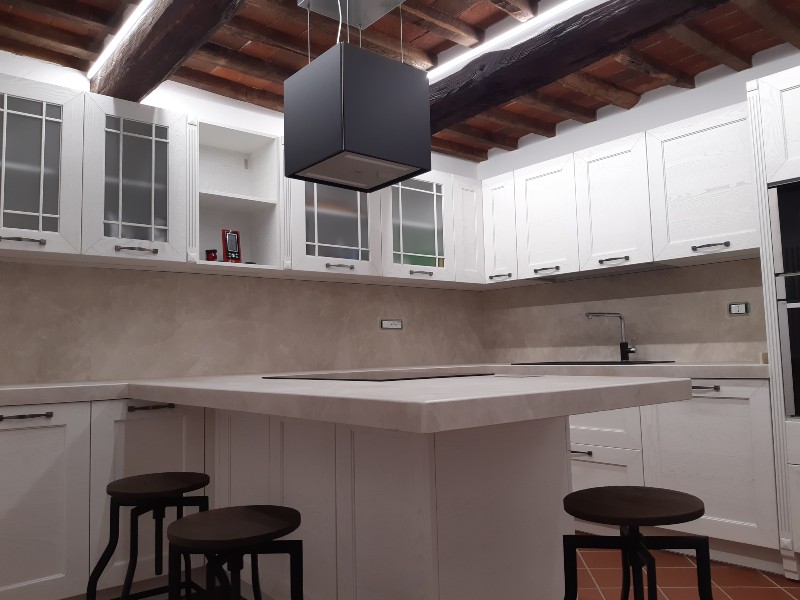Special Materials: Kalliston Marble
Kalliston marble (from the Greek “kallistos,” meaning “beautiful”), is an elegant and precious type of white marble, characterized by a particularly snow-white color, with fine grain and gray veins: it is the softest and whitest variety of precious stone that can be found.
In appearance, it resembles white clouds floating lightly in the sky: impossible not to pause and admire its charm and beauty.
The charm of Kalliston marble can be accentuated by the type of finish that is applied to the material, enhancing the quality and naturalness of the stone.
Careful and skillful processing, in addition to improving the aesthetic appearance of the marble slab, acts on the physical characteristics of the material, making it, for example, less slippery for uses in wet areas (spas, pool edges, etc.) or more resistant to weathering and pollution.
Some types of finish make the stone more polished, smooth to the touch, while others give the material a rough texture, giving it a unique appearance.
The most commonly used finishes for Kalliston marble are polishing and brushing:
Polishing
This type of finish is used to make the surface of the marble perfectly smooth, mirror-like. The resulting shine brings out the details and beauty of the material. In addition, closing the pores of the stone provides better surface protection. Polishing is suitable for interior use.
Brushing
With brushing, the effect achieved is an ‘orange peel’, worn appearance that is smooth and pleasant to the touch.
This finish is applied to give the surface of the slab an aged appearance, making it very suitable for use as a kitchen floor or top.
Its uses
Kalliston white marble is very popular and appreciated because of its luxurious beauty, suitable for completing a design with a unique, modern, yet simple touch.
The main uses of Kalliston white marble are: artistic elements, flooring, wall facades, decorative functions, bathrooms, kitchens, furniture accessories, sculptures, ornaments and interior wall coverings.













